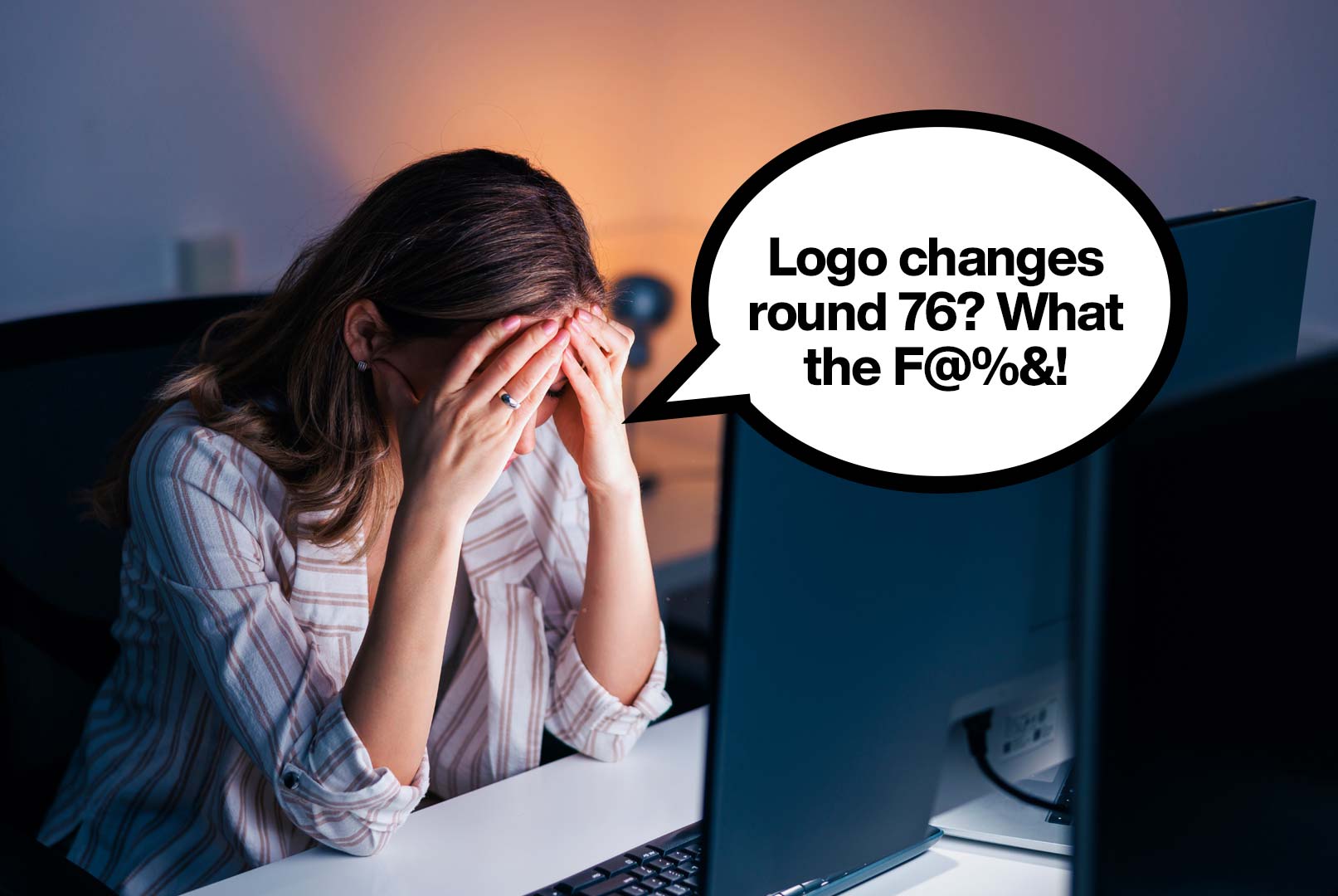The Project Is Ending and the Client Wants More Changes – Help!
You’ve been working on a project and the client keeps asking for more and more changes. They have exceeded the number of rounds you included in your agreement and you need to push back and start charging more for the extra work. How do you push back without destroying the relationship or your profitability?
Your ability to push back on a client who is exceeding the number of changes in your project begins in the contract.
 “Three Rounds” of Changes Sucks
“Three Rounds” of Changes Sucks
When I first start freelancing, I included the number of change rounds in my proposal the same way I had seen it done the past with a line something like the following.
This project includes three rounds of client feedback and changes.
If you are using something like this I’m sorry for my harshness here…but that strategy SUCKS! Really. It sucks bad. Here’s why.
What is the client getting three rounds of feedback on? Three rounds on the logo concept sketches AND three rounds on the core logo designs AND three rounds on the logo family designs? Well that is actually nine rounds of feedback. Are they out of scope since you offered three rounds in your contract?
OR are they getting three rounds total? Like one round of feedback on the concept sketches AND one round on the core logo designs AND one round on the logo family designs? That’s three rounds. But it is likely not sufficient to get you and your client to a happy finish line on the project.
I quickly learned my lesson on this bad practice and began taking a new approach to defining the feedback rounds in my contracts.
Define All the Rounds in Detail
When it comes to contracts, “more is more.” More details. More clauses. More words. More numbers. More of everything. Your contract needs to be the ultimate guide to the flow of the project. If it is too loose, you will lose money…maybe not on this project or the next…but someday soon a loose contract is going to bite you in the butt.
After learning that lesson many times the hard way, I began detailing exactly what happens in each round of a project in my contracts. I had never seen anyone do it that way, which was surprising because it became a SOLID GOLD strategy. Here is an example of the rounds defined in a logo design project.
KICKOFF MEETING: In this meeting we will discuss the client’s business, target audience, competitors, industry, and core values. This meeting typically requires one hour of time. Following the meeting, our designers will continue research on all items discussed in an effort to generate initial ideas for the client’s primary logo design. If this conversation was done during initial project conversations, in this meeting we will review project scope to ensure all parties are on the same page prior to commencement of the project.
ROUND 1 DELIVERY: (MOOD BOARDS) We will develop a minimum of 3 mood boards. Each mood board will be a single page collage of logo design styles extracted from other designs we find in our research.
ROUND 1 APPROVAL: The client will provide feedback on the mood boards presented in Round 1.
ROUND 2 DELIVERY AND APPROVAL (IF NECESSARY): (MOOD BOARDS) If necessary, we will create a revised mood board reflecting the clients feedback.
ROUND 3 DELIVERY: (LOGO CONCEPTS) We will develop a minimum of 5 initial logo concepts for client review. The logo concepts will be ROUGH ideas and presented in either pencil sketch format, or black and white digital format. The objective is to develop some quick initial ideas for client feedback.
ROUND 3 FEEDBACK: The client will provide feedback on the logo concepts provided in Round 3. The feedback will be implemented during Phase 02 of this project.
And this is just Phase 01 of the project! The other two project phases would have a similar definition of the included rounds of feedback you are offering your client. With this level of detail defined in your contract, you will be empowered to push back on the client when they request EXTRA changes because it will be very clear that they are “extra.”
Use This Contract Clause
Your rounds are defined and you’re almost fully protected. One last thing, you need a contract clause that clearly states that anything outside of the rounds listed is “out of scope.” Since you probably don’t have one of these either, you can use mine. Stick this in your contract.
Any requests for additional meetings or design rounds, exceeding what is defined in this contract, may necessitate a modification to the estimated price and timeline of this project.
Charge More with the “That’s Extra” Script
You defined your rounds and you have your contract clause. Now when a client asks for more changes than you defined in the contract, you have power to push back on them and you can do it using this script.
“We are happy to keep making changes as long as it takes to get this project just how you like it. However, all of the design rounds included in our approved project scope have been used. Moving forward, we will switch to hourly billing at a rate of $_____/hour to keep refining the designs. Please confirm your acceptance of this strategy for extending the project and we will be happy to keep going.”
If you give them an inch, they will take a mile. Define your change rounds and use the right contract clause to protect yourself and do not be afraid to push back on a client. Your profitability depends on it.












